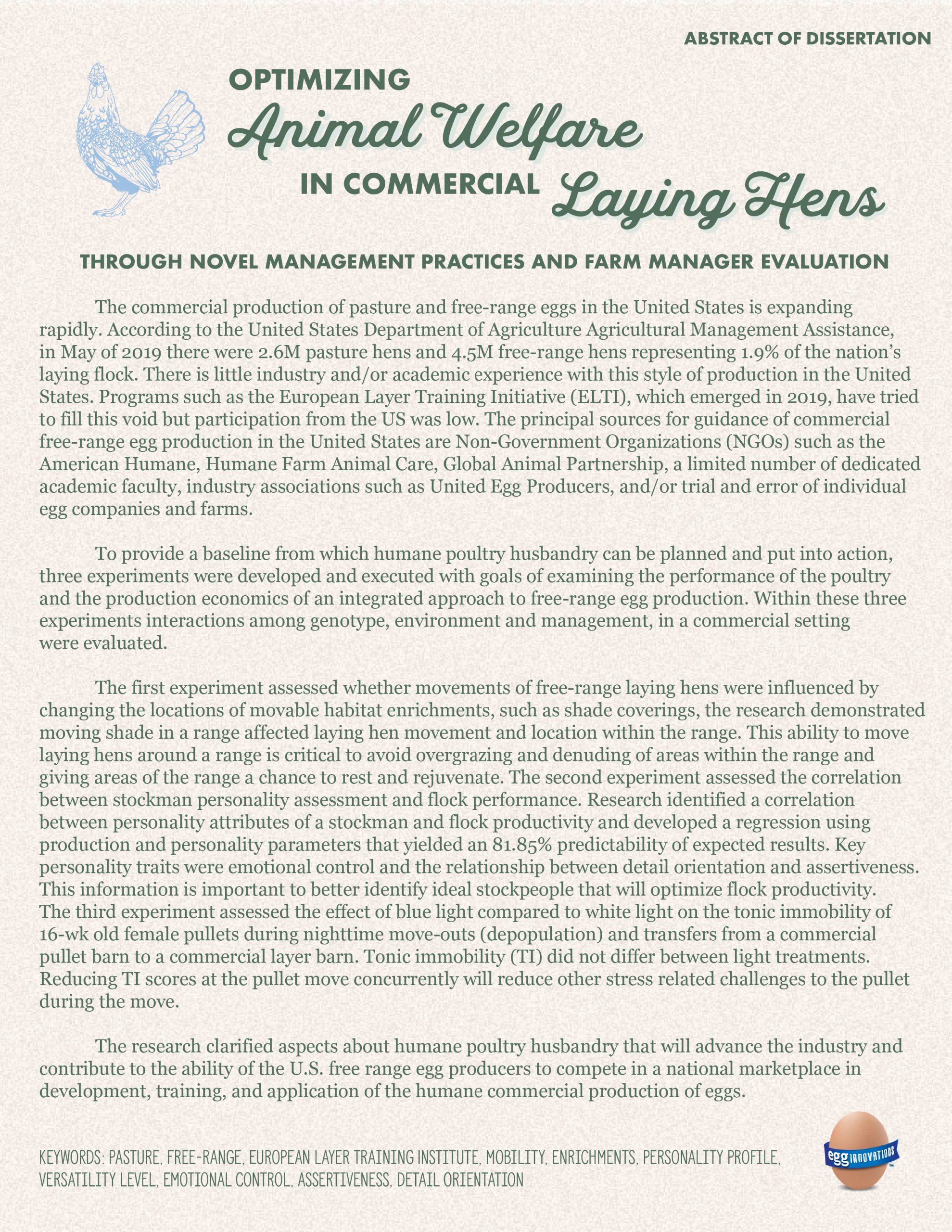A LOOK INTO
Our
Research
John Brunnquell, our President and CEO, has a PhD in Avian Ethology, or the study of natural chicken behaviors, and has been studying chickens for decades. His academic research has shaped every company decision in order to keep the well-being of our chickens our top priority. You can read his academic research below.

Optimizing Animal Welfare in Commercial Laying Hens Through Novel Management Practices and Farm Manager Evaluation
Like everything, as society progresses, our understanding about animal and chicken welfare continues to evolve as well. We have gone from viewing farm animals purely as products to understanding…
Additional research, conducted by industry colleagues, supporting the care and nurturing of laying hens.
1. Rearing without early access to perches impairs the spatial skills of laying hens
The effect of rearing with and without perches on the spatial ability of domestic hens was investigated. No access or late access to perches during rearing has been shown to increase…
2. Night-time roosting in laying hens and the effect of thwarting access to perches
Free-living hens roost on branches in trees at night, and laying hens in aviary systems or cages provided with perches also make extensive use of these for night-time roosting. It is therefore suggested…
3. The effects of demonstrator social status and prior foraging success on social learning in laying hens
Opportunities for social learning within a group of animals are likely to be influenced by the social dynamics of that group. Some individuals may be more influential demonstrators than others even when …
4. Feather Pecking in Domestic Chicks – Its Relation to Dustbathing and Foraging
Feather pecking is a serious problem in the poultry housing, as it may lead to feather damage, injuries, and even mortality. We tested predictions of the two prevalent hypotheses claiming that feather pecking is related….
5. The risk factors affecting the development of gentle and severe feather pecking in loose housed laying hens
Injurious pecking remains one of the biggest problems challenging free range egg producers, with both economic implications for the farmer and welfare implications for the birds. The most widespread form…
6. The prevention and control of feather pecking in laying hens – identifying the underlying principle
Feather pecking (FP) in laying hens remains an important economic and welfare issue. This paper reviews the literature on causes of FP in laying hens. With the ban on conventional cages…
7. External factors and causation of dustbathing in domestic hens
Dustbathing is known to be motivated by complex interactions between internal factors which build up over time and external factors, such as the sight of a dusty substrate. In this study, the effects of other external…
8. Emergence and dispersal behaviour in domestic hens – effects of social rank and novelty of an outdoor area
The apparent reluctance of many free-range laying hens to disperse in the available outdoor area may be due, in part, to the large discrepancy between the indoor and outdoor environments. The objective of this…
9. Group size and perching behaviour in young domestic fowl
To test the hypothesis that young domestic fowl perform less perch-related antipredator behaviour with increasing group size, White Leghorn pullets were reared in four replicate groups of 15, 30, 60 and 120 at a constant…
10. How important is social facilitation for dustbathing in laying hens
Hens in a group usually synchronize dustbathing, such that when one hen starts to dustbathe she will often be joined by others. The sight of another hen dustbathing could thus possibly act as a stimulus…
11. Pastured Poultry Nutrition and Forages
This publication explores the important role that forages play in pastured poultry production for either meat or egg production. Research on the effects of raising poultry on pasture has increased greatly in recent…
12. Social effects on dustbathing behaviour inlaying hens – using video images to investigate effect of rank
We chose to study dustbathing behaviour in laying hens, since it is often assumed that this behaviour is socially facilitated, but it has not been tested. In addition, we investigated the effect of social rank, since this is known…
Contact Us
We are always looking to expand
our Egg Innovations family.
Farmers | Retailers | Wholesalers | Food Service | Manufacturers | Careers
